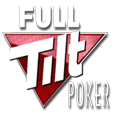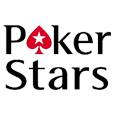In Omaha/8, much like Omaha Poker, each player is dealt four down (hole) cards after the blinds (both big and small) are placed. Starting to the left of the big blind each player may check, call the big blind or raise. After all action is completed, three cards are dealt face up in the middle of the table (flop). These are community cards meaning that everyone may use them to complete their best five card hand. The second round of betting starts with the person in the small blind or whoever is still in the hand rotating to the left. A fourth card (turn) is placed in the middle followed by a round of betting, usually at twice the minimum bet of the first two rounds. The final card (river) is then placed in the center and the final round of betting is completed.
For those of you who have holdem experience, this all sounds familiar with the exception of the number of hole cards. The important difference is that each player must use two hole cards and three board cards. You can’t use one, three or four hole cards, you must use exactly two. Now you can use a different two to make a high hand and low hand but you must use two from your hand for each. Here’s an example. You hold Ac 3d 5h Qc and the board has 2c 4c 6d Jc Kh. Your high hand uses Ac Qc from your hand and 2c 4c Jc from the board and your low hand uses Ac 3d from your hand and 2c 4c 6d from the board. Many new players, especially those crossing over from holdem, forget they must use two cards from their hand. Don’t make this mistake because it can cost you a lot of money.
Because Omaha 8 is played for both high and low, the final pot is split between the best high hand and the best low hand if one qualifies. For a low hand to qualify it must have five non-paired cards eight or below. Because of the qualification of eight-or-better, sometimes there is no possible low hand and the best high hand will win the entire pot. For example, if the board reads 3 6 9 J Q then there is no possible low hand because each player must use three cards from the board. In addition, if you hold A 3 9 Q and the board reads 2 3 4 J K you don’t have a qualifying low hand because your best low hand is A 2 3 4 9. There is often confusion among new players on how to determine which of two or more possible low hands is the best. The easiest way is to read the low hand backwards as a number to see which is lower. Here is an example:
A 3 4 7 8 87,431
A 2 3 7 8 87,321
2 4 5 6 7 76,542
A 2 3 4 5 54,321
The last one is the lowest and the first one is the highest.



